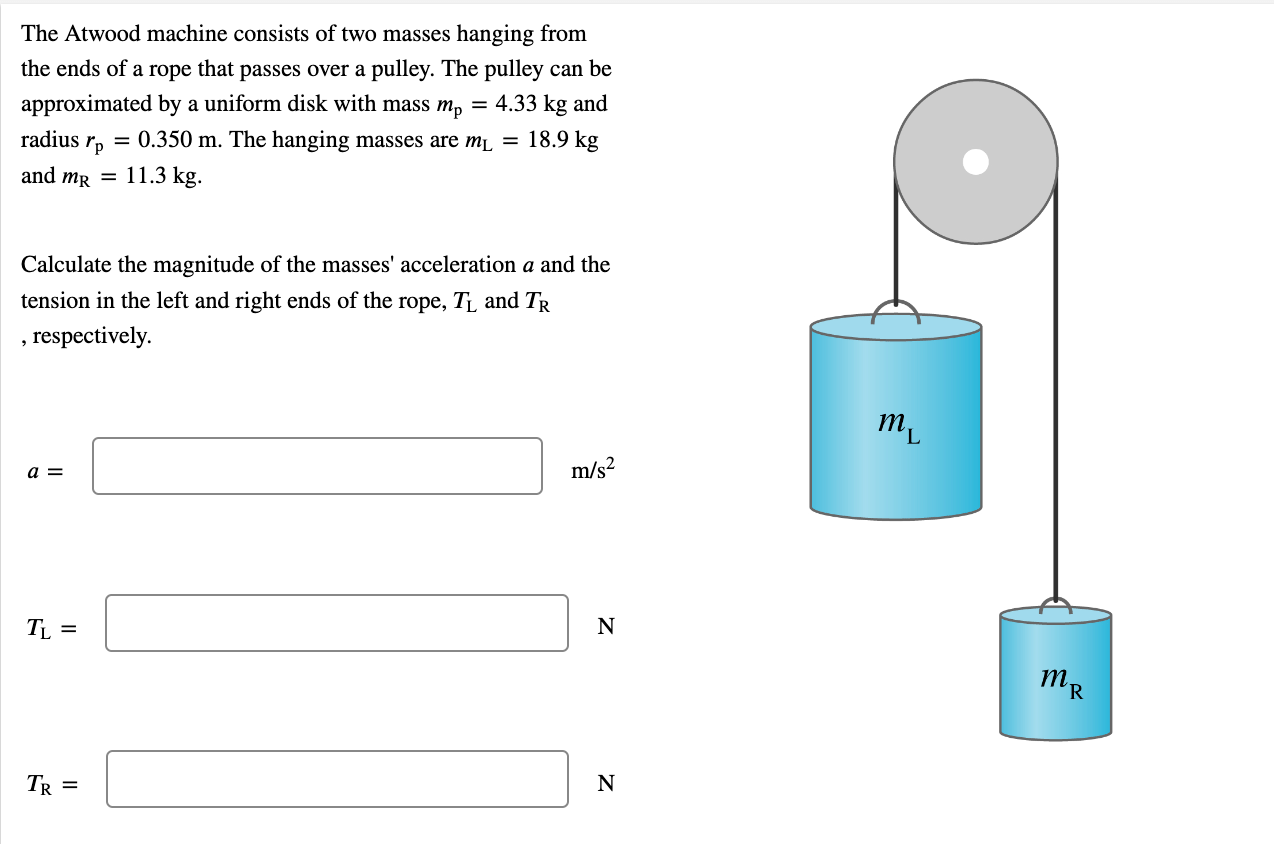A Flywheel In The Form Of A Uniformly Thick Disk
A Flywheel In The Form Of A Uniformly Thick Disk - The problem has a flywheel. A tangential force of 0.235 n applied at the rim causes. We know the moment of inertia of a flywheel to be half a mass. Web a flywheel in the form of a uniformly thick disk of radius 1.68 m has a mass of 54.1 kg and spins. Web a flywheel in the form of a uniformly thick disk of radius 1.53 m has a mass of 32.1 kg and spins counterclockwise at 259rpm. To calculate the constant torque required to stop the flywheel, we can use the equation: Web a flywheel in the form of a uniformly thick disk of radius 1.63 m, has a mass of 23.6 kg and spins counterclockwise at 245 rpm. Web a ring with the same mass as the disk is attached around the disk's rim. The moment of inertia of a flywheel is equal to half a mass. The problem we have is a flywheel.
Solved A flywheel in the form of a uniformly thick disk of
Web a flywheel in the form of a uniformly thick disk of radius 1.53 m has a mass of 32.1 kg and spins counterclockwise at 259rpm. Web a flywheel in the form of a uniformly thick disk of radius 1.63 m, has a mass of 23.6 kg and spins counterclockwise at 245 rpm. The problem has a flywheel. Web a.
A flywheel in the form of a uniformly thick disk of radius 1.08 m has a... HomeworkLib
Web a flywheel in the form of a uniformly thick disk of radius 1.53 m has a mass of 32.1 kg and spins counterclockwise at 259rpm. We know the moment of inertia of a flywheel to be half a mass. The problem has a flywheel. Web a flywheel in the form of a uniformly thick disk of radius 1.68 m.
Solved A flywheel in the form of a uniformly thick disk of
The moment of inertia of a flywheel is equal to half a mass. We know the moment of inertia of a flywheel to be half a mass. A tangential force of 0.235 n applied at the rim causes. Web a flywheel in the form of a uniformly thick disk of radius 1.68 m has a mass of 54.1 kg and.
Solved A flywheel in the form of a uniformly thick disk of
To calculate the constant torque required to stop the flywheel, we can use the equation: Web a ring with the same mass as the disk is attached around the disk's rim. We know the moment of inertia of a flywheel to be half a mass. Web a flywheel in the form of a uniformly thick disk of radius 1.68 m.
Solved A flywheel in the form of a uniformly thick disk of
Web a flywheel in the form of a uniformly thick disk of radius 1.63 m, has a mass of 23.6 kg and spins counterclockwise at 245 rpm. Web a flywheel in the form of a uniformly thick disk of radius 1.53 m has a mass of 32.1 kg and spins counterclockwise at 259rpm. Web a flywheel in the form of.
Solved A flywheel in the form of a uniformly thick disk of
Web a flywheel in the form of a uniformly thick disk of radius 1.53 m has a mass of 32.1 kg and spins counterclockwise at 259rpm. Web a flywheel in the form of a uniformly thick disk of radius 1.68 m has a mass of 54.1 kg and spins. Web a flywheel in the form of a uniformly thick disk.
Solved A flywheel in the form of a uniformly thick disk of
A tangential force of 0.235 n applied at the rim causes. The moment of inertia of a flywheel is equal to half a mass. Web a flywheel in the form of a uniformly thick disk of radius 1.68 m has a mass of 54.1 kg and spins. Web a flywheel in the form of a uniformly thick disk of radius.
SOLVED A flywheel in the form of a uniformly thick disk of radius 1.23 m, has a mass Of 57.6 kg
The moment of inertia of a flywheel is equal to half a mass. We know the moment of inertia of a flywheel to be half a mass. To calculate the constant torque required to stop the flywheel, we can use the equation: The problem we have is a flywheel. Web a flywheel in the form of a uniformly thick disk.
Solved A flywheel in the form of a uniformly thick disk of
A tangential force of 0.235 n applied at the rim causes. The moment of inertia of a flywheel is equal to half a mass. We know the moment of inertia of a flywheel to be half a mass. Web a flywheel in the form of a uniformly thick disk of radius 1.63 m, has a mass of 23.6 kg and.
Solved A flywheel in the form of a uniformly thick disk of
To calculate the constant torque required to stop the flywheel, we can use the equation: A tangential force of 0.235 n applied at the rim causes. Web a flywheel in the form of a uniformly thick disk of radius 1.53 m has a mass of 32.1 kg and spins counterclockwise at 259rpm. Web a flywheel in the form of a.
The moment of inertia of a flywheel is equal to half a mass. To calculate the constant torque required to stop the flywheel, we can use the equation: Web a ring with the same mass as the disk is attached around the disk's rim. Web a flywheel in the form of a uniformly thick disk of radius 1.63 m, has a mass of 23.6 kg and spins counterclockwise at 245 rpm. The problem we have is a flywheel. A tangential force of 0.235 n applied at the rim causes. The problem has a flywheel. We know the moment of inertia of a flywheel to be half a mass. Web a flywheel in the form of a uniformly thick disk of radius 1.53 m has a mass of 32.1 kg and spins counterclockwise at 259rpm. Web a flywheel in the form of a uniformly thick disk of radius 1.68 m has a mass of 54.1 kg and spins.
The Problem Has A Flywheel.
The problem we have is a flywheel. Web a flywheel in the form of a uniformly thick disk of radius 1.68 m has a mass of 54.1 kg and spins. A tangential force of 0.235 n applied at the rim causes. The moment of inertia of a flywheel is equal to half a mass.
Web A Flywheel In The Form Of A Uniformly Thick Disk Of Radius 1.63 M, Has A Mass Of 23.6 Kg And Spins Counterclockwise At 245 Rpm.
Web a ring with the same mass as the disk is attached around the disk's rim. Web a flywheel in the form of a uniformly thick disk of radius 1.53 m has a mass of 32.1 kg and spins counterclockwise at 259rpm. We know the moment of inertia of a flywheel to be half a mass. To calculate the constant torque required to stop the flywheel, we can use the equation:










